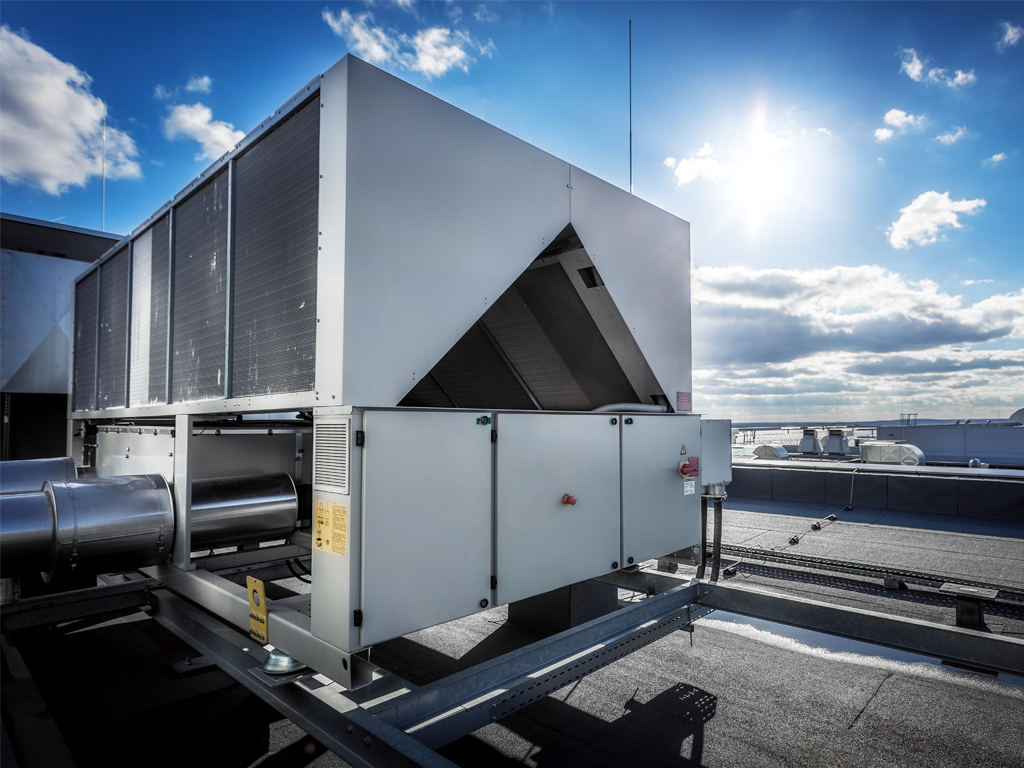We’ve previously provided 5 tips on lowering your HVAC costs, but HVAC is too broad of a topic to cover in a single article. Here is some more information to help you better understand your HVAC system and lower your costs.
How Does a Commercial HVAC System Work?
To save money on your HVAC system, you need to know the basics of how one works. HVAC is an acronym for Heating, Ventilation, and Air Conditioning. All three of these components are necessary for something to count as an HVAC system.
- Heating: may be provided by a fuel-burning furnace, an electric element, or solar power. The heating element may heat the air directly (such as in forced hot air,) or it may heat liquid in pipes to be distributed to the duct system (such as in the case of a hot water boiler.) Heat sources that don’t move air — such as radiators — only count as part of the HVAC system if they also coordinate with mechanical ventilation in some way.
-
Air Conditioning: An HVAC’s air conditioner is essentially a building-sized refrigerator connected to the ductwork; air conditioners use pipes filled with refrigerant to collect heat from the air inside the building and move it outside the building. These pipes run through 4 major components: the evaporator (collects heat indoors,) the compressor (pressurizes the refrigerant before it reaches the condenser so that it will shed its heat outside,) the condenser (cools the refrigerant with water or air,) and the expansion valve (regulates the flow of the refrigerant.)
n.b. on Heat Pumps: Heats pumps are a mechanism of heat transfer that may be used for heating a building in lieu of traditional furnaces. They function as an air conditioner in reverse, removing heat from an outdoor source and transferring it indoors. Depending on its setup and the surrounding environment, a heat pump may also double as an air conditioner in warmer weather. - Ventilation: For a detailed discussion of ventilation.
Any of the above functions might also be aided by energy-saving devices such as economizers or ERVs.
What Are the Main Types of HVAC Systems?
HVAC systems are as unique as commercial buildings themselves. However, we believe they can be split into 3 broad categories. Each category has its financial advantages and disadvantages, depending on both your building and business needs.
- Split Systems: The most common type of system in residences, split systems have separate heating and cooling units that connect to the building’s ductwork. They are the cheapest option to install (at least for residential-style buildings,) but they are not the most energy efficient. Some split systems are “hybrids” meaning they can switch between different heating fuels depending on which is most ideal at that time.
- Packaged Systems: Packaged systems house heating and cooling in a single unit that connects to the building’s ductwork. In large commercial buildings, these often take the form of roof-top units (RTUs,) but they may also be found in the basement. Packaged systems don’t require outdoor space, which can be a fiscal advantage for urban buildings. Because they are a single unit, they don’t need to be matched.
- Ductless Systems: Ductless systems — sometimes also referred to as “duct free” or “mini-split” — maintain heating and cooling via individual combined units throughout the building. Certain ductless systems – such as variable refrigerant flow (VRF) — deliver refrigerant from a central processing unit to individual indoor units while using a separate mechanical system for ventilation. Other ductless systems — such as the window unit in most hotels — operate independently. Later units may not provide ventilation, depending on whether or not they have a “fresh air” setting. Ductless systems tend to have high upfront costs, but they may be more energy efficient for certain buildings.
Why is Having a Matched HVAC System Important?
Because certain systems consist of multiple units, they can be purchased from multiple vendors. If the indoor components of your system are properly sized, calibrated, and installed relative to the outdoor components (and vice-versa,) the system is considered “matched.” The Air-Conditioning, Heating, and Refrigeration Institute (AHRI) is the standards agency that determines if a system is matched; it provides certificate reference numbers to certain heating and cooling units, which can be entered into their directory.
If your system is unmatched, this can be a costly mistake for the following reasons:
- Inefficiency: An unmatched system is inefficient and will raise the cost of your energy bill. As we’ve discussed previously, investing in the energy efficiency of your building usually pays dividends in the long run.
- Repairs: In the worst-case scenario, an unmatched system will have a reduced lifespan, resulting in early replacement. Unmatched systems may also void the manufacturer’s warranty.
- Taxes: Commercial buildings that miss certain HVAC energy efficiency benchmarks also miss out on generous tax cuts. Your state and local government might have additional incentives and/or regulations, including fines for HVACs that don’t comply with industry standards.
Are HVACs a “Building Improvement” or “Equipment?”
Prior to 2018, the IRS considered HVAC systems capital improvements, meaning that they were assets of your business you could be taxed upon. You could deduct the cost of the HVAC’s depreciation, but not the purchase cost of the HVAC itself.
Currently, the purchase of certain HVAC components (or even an entirely new system) may qualify as equipment. If so, it is a deductible business expense under Section 179. There is a deduction limit of $1,160,000 and a spending limit of $4,050,000 for all equipment purchased in 2023, meaning that this benefit is aimed at small businesses.
There are, of course, exceptions, caveats, prerequisites, and general tangles that must be sorted out in order to determine whether your HVAC-related purchase qualifies. Therefore, we highly recommend you consult with your accountant for a professional determination.
Looking Beyond HVAC
We hope these insights provide you with a greater understanding of how HVAC management can best support your office building, restaurant, arena, school, or other organization.
However, as we’ve previously mentioned, indoor air quality is about more than just your HVAC system. Whether you are striving to save money on your energy bill or meet the new ASHRAE 241 Standards, your HVAC system can’t carry the entire load. For a more holistic picture of air quality (as well as a detailed discussion on ventilation,) we encourage you to read our article on ventilation, filtration, and air cleaning.



